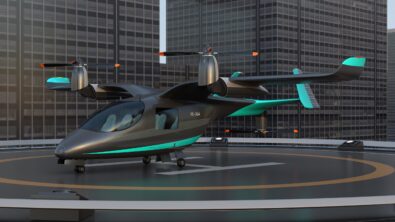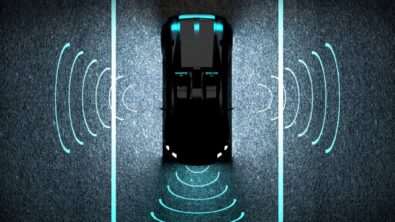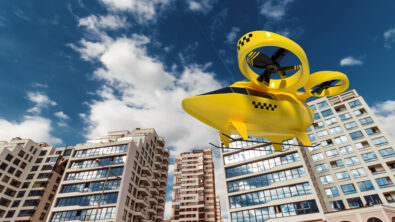Insights on AAM Autonomy from Automotive Part Three – Summary

The potential for autonomous advanced air mobility (AAM) vehicles is enormous. With trained pilots getting harder to come by, having air taxis capable of uncrewed flight can allow a new form of aerial transportation take off and transform cities as we know them. Of course, adding autonomous systems to such aircraft adds even more considerations related to their design and operation, on top of considerations from existing mechanical, electrical, thermal, and other systems. Managing them all and launching AAM successfully can be done with digital transformation.
This was the topic of the latest episode of Talking Aerospace Today, featuring Todd Tuthill, Vice President of Aerospace and Defense (A&D) for Siemens Digital Industries Software, and Nand Kochhar, Vice President of Automotive and Transportation for Siemens Digital Industries Software. Together, they discussed precisely how digital transformation has benefited the development of autonomous vehicles, both in automotive and AAM, as well as what can convince people to utilize autonomous AAM.
Digital transformation is key
According to Nand, digital transformation has been a crucial component for producing autonomous vehicles in automotive. At the center of it all lies the digital twin, a virtual representation of a product that enables engineers to see how the product would perform before ever building it physically. This can be done by simulating the digital twin in a virtual environment, incorporating data from the product’s multiple engineering domains to give comprehensive insights into how the product would perform as an integrated whole.
The role of the digital twin has become increasingly critical to the automotive industry over the years as cars become more electrified. Companies are not only dealing with the structural element of cars anymore. Now the electrical and software architectures are becoming just as important, and adding autonomous systems is yet another important consideration. Utilizing the digital twin and other digital technologies in design methodologies lets engineers identify and remove errors earlier in the product lifecycle and ensure a successful launch.
Beyond design
Todd echoes much of what Nand says, but also makes the additional point of how digital transformation can benefit processes beyond just the front end design. It can optimize manufacturing operations, support AAM vehicles in operation, and help promote sustainability. Much of the A&D industry is experiencing a workforce shortage, which effects everything from design and beyond. Digital transformation can help alleviate any stress such shortages cause anywhere in the product lifecycle.
Getting people onboard
Near the end of the episode, Todd raises a key question that any companies working in autonomous AAM should consider. What would it take for people to climb into an aircraft with no pilot? Autopilots are already a feature throughout aviation, yet commercial airliners still have human pilots aboard, which comforts passengers. A fully uncrewed air taxi, however, is a different scenario, and there are bound to be cultural barriers before autonomous flight becomes mainstream in the public consciousness.
However, these barriers have been dropping recently in the automotive industry. As the technology advances and proves itself to be safe and secure, more and more people are becoming okay with riding autonomous cars. Additionally, Nand points out how autonomous vehicles can give the freedom of movement to people who may no longer be fit to drive on their own, such as senior citizens. If AAM can prove its autonomous functions are safe and work perfectly, the acceptance of autonomous air taxis can follow a similar course to automotive.
Autonomous AAM is the future
Advanced air mobility is already an advanced form of aircraft that incorporates new technologies and systems, and adding autonomy might appear to add even more complexity. By utilizing digital transformation throughout the product lifecycle, however, companies can successfully navigate those complexities and release a proven product that can change aerial transportation as we know it.
Stay tuned for future Talking Aerospace Today episodes discussing more of the challenges being faced by the AAM sector.
Siemens Digital Industries Software helps organizations of all sizes digitally transform using software, hardware and services from the Siemens Xcelerator business platform. Siemens’ software and the comprehensive digital twin enable companies to optimize their design, engineering and manufacturing processes to turn today’s ideas into the sustainable products of the future. From chips to entire systems, from product to process, across all industries. Siemens Digital Industries Software – Accelerating transformation.


